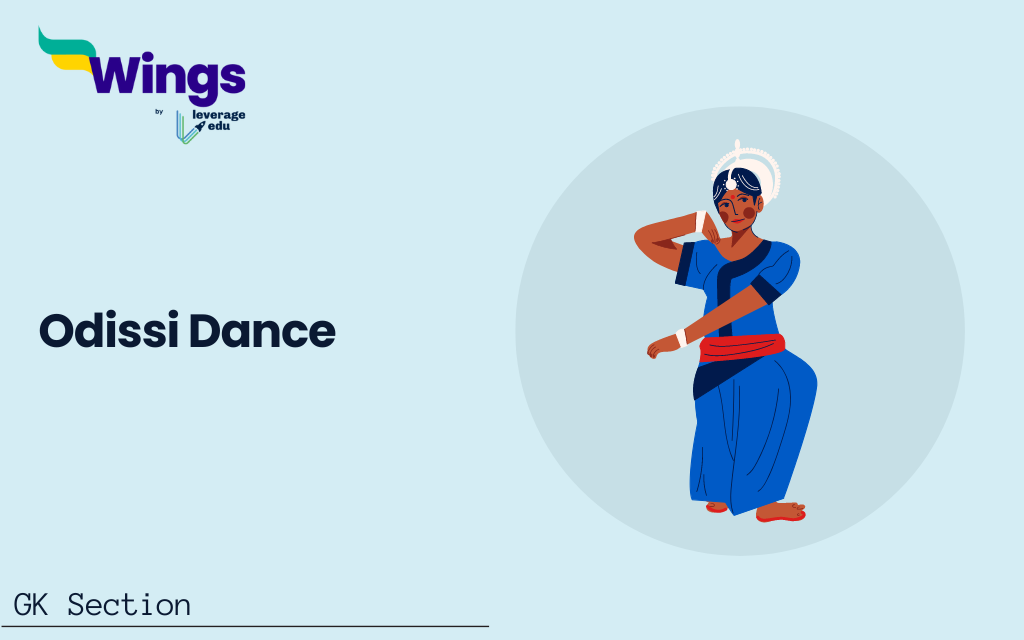Odissi dance originates in the Indian state of Odisha. According to Natya Shastra, ‘Odhra Magadha’ is the earliest form of modern Odissi dance. It is one of India’s eight classical dances. It’s a sensual, lyrical dance form. Odissi, often known as a love dance, symbolises both the human and spiritual parts of existence. It also shows both the nuances and the everyday aspects of existence. Buddhist statues, Nataraja, tantric figures, celestial dancers, and musicians in ancient Shaivite temples provide evidence of the ongoing legacy of Odissi dance from the second to the tenth centuries AD.
In this article, we’ll look at the history, evolution, and rebirth of the Odissi dance form. Learn about its different features and aspects.
Contents
Overview of Odissi Dance
In Odisha, the Udaygiri and Khandagiri Caves offer some of the best examples of the earliest instances of Odissi dance, which derives its name from the ‘Odra nritya’ mentioned in the Natya Shastra. The dance was mainly practiced by the’maharis’ and patronised by Kharavela, the Jain king. Maharis were ritually married to Lord Jagannath (considered a form of Vishnu), who was regarded as a living entity. Young girls, aged 8 or 9, were mostly made to serve in temples.
The Mahari method fell out of use when Vaishnavism swept over the region. Instead, young lads were recruited as ‘Gotipuas.’ Another variation of this technique, known as ‘Nartala,’ was still practiced in royal courts. Outward appearances, hand signals, and body developments all suggest a distinct feeling, or one of the nine rasas.
History and Evolution of Odissi Dance
Odissi dance has its roots in the ancient Sanskrit Hindu literature ‘Natya Shastra’, which deals with various performing arts. According to the Natya Shastra, ‘Odhra Magadha’ is the earliest form of contemporary Odissi dance.
Also read: Bharatanatyam
Odissi was performed at ancient and historical places such as caves and temples in Puri, Konark, and Bhubaneswar. The Manchapuri cave in Odisha’s Udayagiri caves, the largest Buddhist complex in the state, dates back to the era of Kharavela, the Jain monarch of Kalinga from the Mahameghavahana dynasty, and features carvings of singers and dancers. Udayagiri’s Hathigumpha Inscriptions, inscribed by Kharavela, also contain references to music and dance.
Key Features of Odissi Dance
Odissi rose to international prominence in the mid-twentieth century as a result of the work of Charles Fabri and Indrani Rahman.
Some of the essential aspects of Odissi include:
- Similar to Bharatnatyam in terms of emotional expression through mudras and postures.
- Odissi dance is inherently characterised by the tribhanga stance, or three-bended body form.
- Also, the ‘Chowk’ posture, with hands extended wide, represents masculinity.
- The lower body remains virtually immobile during Odissi, while the torso moves. Hand gestures play a significant role in portraying emotions during the Nritya section.
- The Odissi dance form stands out because it depicts grace, sensuality, and beauty. Odissi dancers create intricate geometric shapes and patterns on their bodies. Hence, it is known as ‘mobile sculpture.’
- Jayadeva’s Gita Govinda is famous for motivating Odissi dancers to choose dance themes.
- Famous epics related to Odissi dance include:
- Jadunath Sinha’s Abhinaya Darpana Prakasha
- Rajmani Patra’s Abhinaya Chandrika
- Maheshwara Mahapatra’s Abhinaya Chandrika
Also Read: Sufism in India
Key Facts About Odissi Dance
A few facts about Odissi dance is:
- The Maharis are the chief guardians of the Odissi Dance. They were known as temple dancers. However, it is thought that the integrity of the Odissi dancing form began to degrade when royal sponsors hired Maharis to perform at the royal court.
- Gotipuas are young boys who are trained in the Odissi dance style. They perform at temples and occasionally for entertainment. According to reports, many of today’s male Odissi teachers come from the gotipua tradition.
- Female dancers commonly wear vividly coloured saris made of local silk and adorned with traditional and local designs.This dance form is unique in that it incorporates Indian ragas from both the south and the north, symbolising the interchange of artistic ideas and performance arts between India’s two regions.
- The musical accompaniment consists of tabla, pakhawaj, harmonium, cymbals, violin, flute, sitar, and Swarmandal.
Recent Posts
FAQs
Odissi Dance originated in the Indian state of Odisha. It originated with the Odhra Magadha dancing form.
Female artists wear brightly coloured saris made of native silk and embellished with traditional and local motifs.
The musical instruments are tabla, pakhawaj, harmonium, cymbals, violin, flute, sitar, and swarmandal.
This was all about the “Odissi Dance”. For more such informative blogs, check out our UPSC Exams Section and Study Material Section, or you can learn more about us by visiting our Indian exams page.
 One app for all your study abroad needs
One app for all your study abroad needs














